Key takeaways:
- Open-source mapping empowers communities by allowing diverse contributors to create and share geographic data, enhancing representation of overlooked areas.
- Drone mapping provides detailed aerial imagery, enabling precise environmental monitoring and supporting informed decision-making for conservation efforts.
- Tools like QGIS and OpenDroneMap facilitate efficient processing and visualization of mapping data, making technology accessible for meaningful environmental advocacy.
- Practical applications in Zanzibar include tracking coastal erosion, improving agricultural practices, and enhancing tourism through interactive mapping of cultural and natural sites.
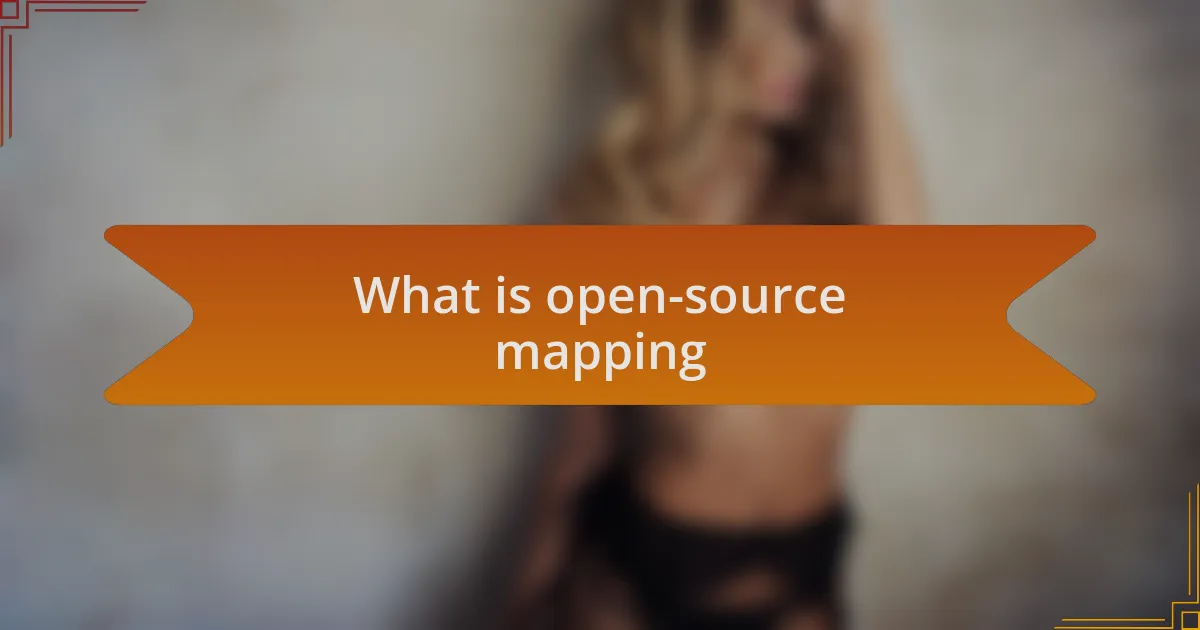
What is open-source mapping
Open-source mapping refers to the collaborative creation and sharing of geographic data that anyone can access, modify, and distribute. This approach democratizes cartography, allowing diverse contributors to shape how places are represented. When I first encountered open-source mapping, I was amazed at how a community could come together to map out areas that traditional resources often overlooked, like the small villages in Zanzibar.
At its core, open-source mapping is about community empowerment. I recall a project where local residents utilized mapping software to highlight trails in remote areas, ensuring hikers could explore with confidence while respecting the environment. Doesn’t it make you wonder how many hidden gems are just waiting to be mapped with the help of local insights?
The beauty of open-source mapping lies in its adaptability. Tools like OpenStreetMap have revolutionized how we think about geography by integrating data from users worldwide, creating a living, breathing map. For someone like me, who loves exploring off-the-beaten-path locations, it’s a reminder that everyone has something valuable to offer to the cartographic conversation.
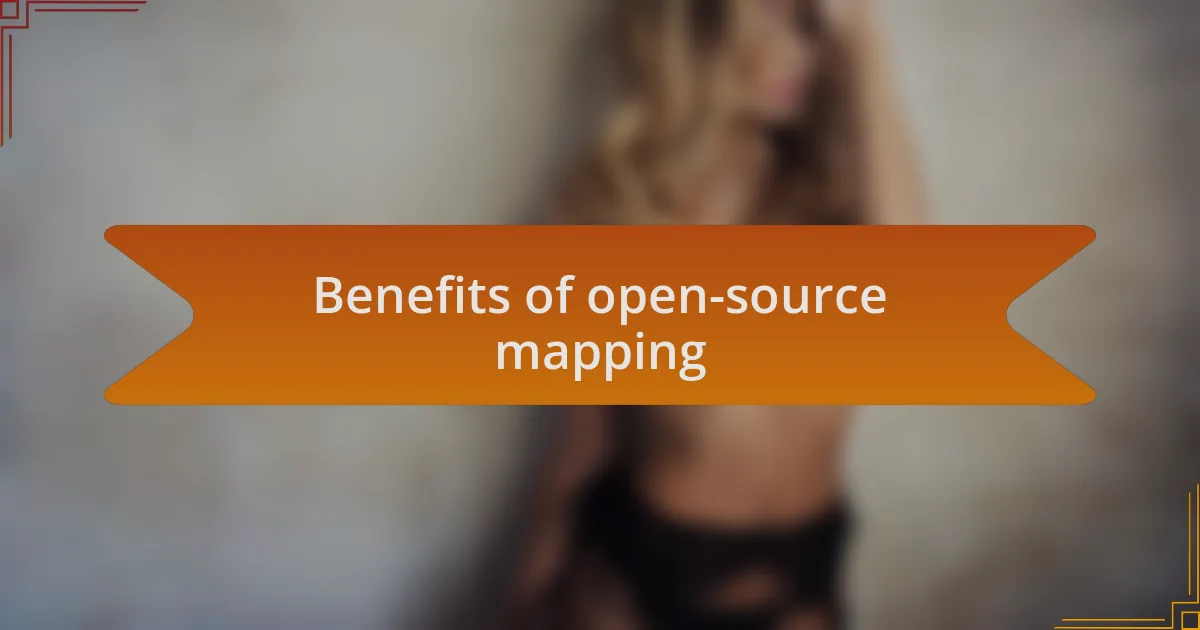
Benefits of open-source mapping
Open-source mapping offers unparalleled accessibility. I remember the first time I contributed to an open-source map. It was fulfilling to know that my small input could help someone navigate a remote corner of Zanzibar. How empowering is it to think that anyone, regardless of their background, can participate in mapping their surroundings? This collective effort leads to richer, more diverse data that traditional mapping tools simply can’t provide.
Another significant benefit of open-source mapping is its cost-effectiveness. Unlike proprietary mapping services, which often come with hefty fees, open-source platforms allow anyone to use and contribute to the maps without financial barriers. I can’t tell you how refreshing it was to access high-quality mapping data for a community project at no cost. This invites innovation and collaboration from individuals who might otherwise be excluded due to budget constraints.
Moreover, the dynamic nature of open-source mapping means that the maps are constantly evolving. On one occasion, after visiting a newly opened market in Zanzibar, I updated the map to reflect its location and opening hours. Later that week, I received feedback from a fellow user who thanked me for the update, saying it helped them find the place easily. Isn’t it powerful to think that each of us can influence our geographic landscape in real-time? This ongoing dialogue within the mapping community keeps the data accurate, timely, and, most importantly, relevant to the needs of users.
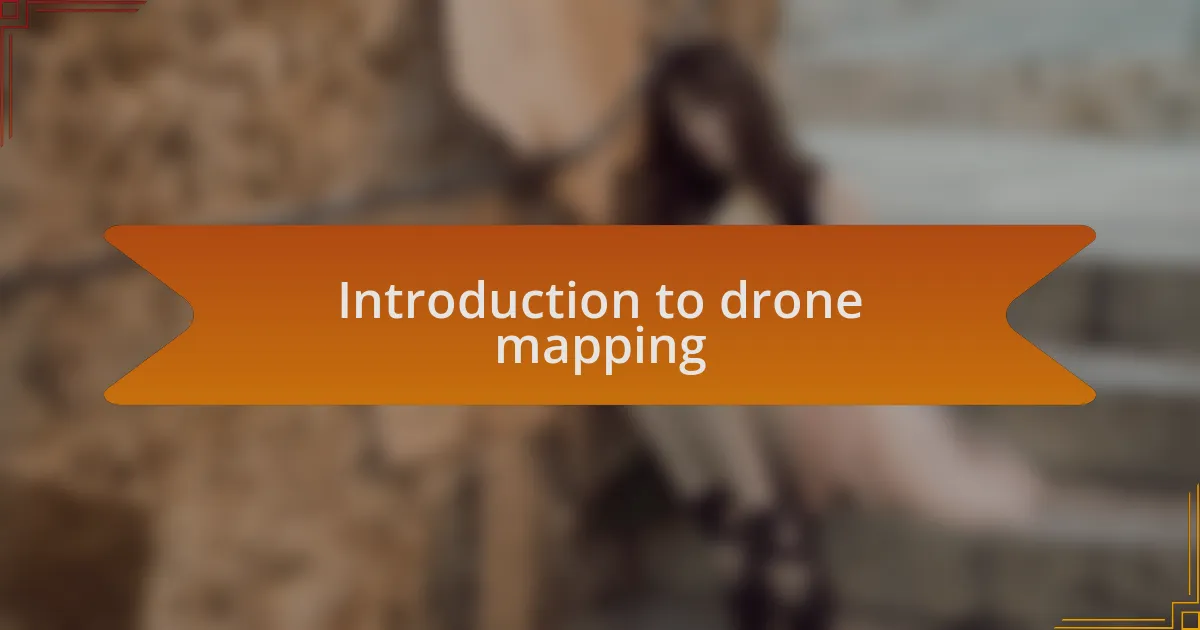
Introduction to drone mapping
Drone mapping is a transformative technology that combines the capabilities of drones with advanced geographic information systems (GIS). From my experience, this realization struck me when I first saw how drones could capture detailed aerial imagery of Zanzibar’s stunning landscapes. It was almost surreal to watch a drone gracefully glide over scenery that, until then, had been challenging to document accurately.
I’ve found that the precision of drone mapping makes it especially useful for various applications, including environmental monitoring and construction planning. One time, while working on a project assessing coastal erosion in Zanzibar, the drone provided us with high-resolution images that highlighted changes in shoreline topography. How could we have accomplished such detailed analysis without the bird’s-eye view offered by a drone?
The process of drone mapping is more than just taking photos; it’s about collecting and interpreting data that can greatly influence decision-making. I remember gathering a group of local researchers to discuss how we could use drone maps to inform conservation efforts for endangered species in the region. It was invigorating to see the excitement on their faces as we explored the potential to make a real difference, fostering a deeper connection to the land and its preservation.
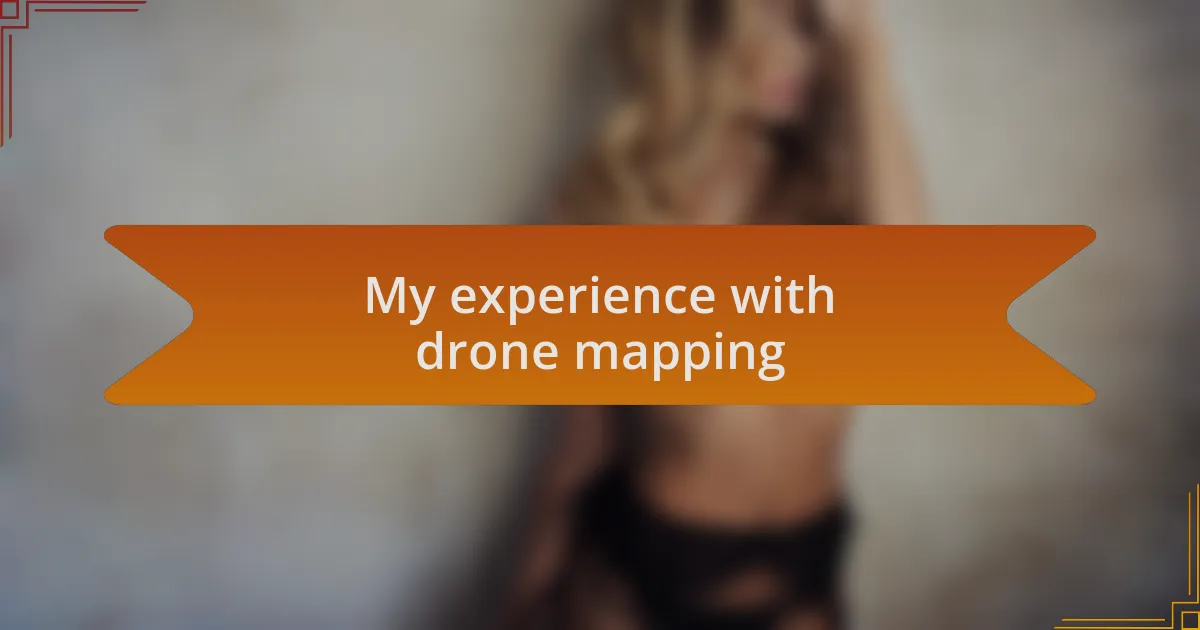
My experience with drone mapping
Engaging in drone mapping has reshaped my perspective on surveying and environmental conservation. On one memorable occasion, I flew a drone over a remote area of Zanzibar with hopes of revealing the hidden treasures of its lush vegetation. The moment I reviewed the footage and saw patterns and details that were invisible from the ground, I felt an exhilarating blend of curiosity and reverence for the natural beauty we often overlook.
What truly stands out to me is the collaborative aspect of drone mapping. While participating in a community project focused on sustainable fishing practices, I found myself working alongside fishermen who, for generations, relied solely on traditional methods. When I showcased drone imagery that illustrated fish migration patterns, I could see their skepticism transform into enthusiasm. It was a vivid reminder of how technology can bridge the gap between old knowledge and new methodologies.
Drone mapping is not just about the technology; it’s about the stories that unfold from the data it produces. During a workshop aimed at teaching local students about mapping techniques, I was struck by their eagerness to learn. One student asked, “Can this help us understand our island better?” I realized then that beyond the technical skills, we were igniting a passion for exploration and understanding, helping a new generation connect deeply with Zanzibar’s environment.

Tools I use for mapping
When it comes to mapping with drones, I rely heavily on open-source tools that make the process not just efficient but also cost-effective. One of my go-to platforms is QGIS, which allows me to analyze and visualize geospatial data seamlessly. I remember the first time I traced coastline changes in Zanzibar using QGIS; it was eye-opening to see how my drone footage brought to life spatial data that would otherwise remain buried in spreadsheets.
In addition to QGIS, I often use OpenDroneMap for processing the aerial imagery captured by my drone. This software has transformed the way I convert raw images into 3D models and orthophotos. I still feel the thrill of watching the processing unfold, knowing I’m not just creating images but decoding the essence of the landscape. It’s fascinating to realize how these tools can uncover patterns that tell stories about our environment.
I can’t forget about Google Earth Engine—what a powerful tool! I once used it to assess deforestation rates over a span of years. By layering my drone data with satellite imagery, I could visually narrate the changes with alarming clarity. Isn’t it incredible how the right tools can empower you to advocate for conservation and drive meaningful dialogue about environmental stewardship?
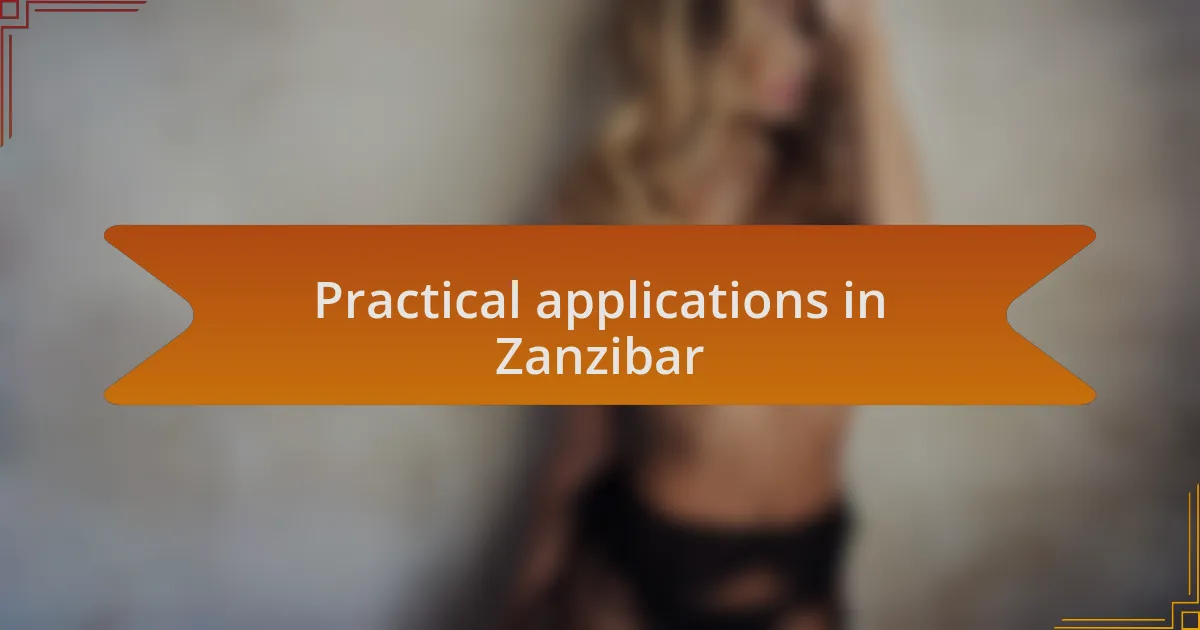
Practical applications in Zanzibar
One practical application of open-source mapping in Zanzibar is in tracking coastal erosion. The first time I mapped the coastline using drone data, I was astounded by the rapid changes that had occurred over just a few years. This experience highlighted how crucial it is for local authorities to have accurate, up-to-date information to make informed decisions about shoreline management and environmental protection.
Furthermore, I’ve had success in utilizing drone mapping to support agricultural practices. In rural areas, farmers have benefited from detailed crop assessments that inform irrigation and fertilization strategies. When I shared the results with a local farmer, his eyes lit up; he could finally see how data could lead to increased yields and better sustainability. Isn’t it amazing how a simple mapping approach can bridge the gap between technology and tradition?
Another significant use of open-source mapping is in enhancing tourism by visualizing cultural sites and natural reserves. By creating interactive maps that showcase attractions and their accessibility, I’ve helped tourists navigate Zanzibar more enjoyably. During one particular project, I received feedback from visitors who said these maps transformed their experience, allowing them to connect with the island on a deeper level. Could there be a better way to foster appreciation for the beauty and heritage of Zanzibar?